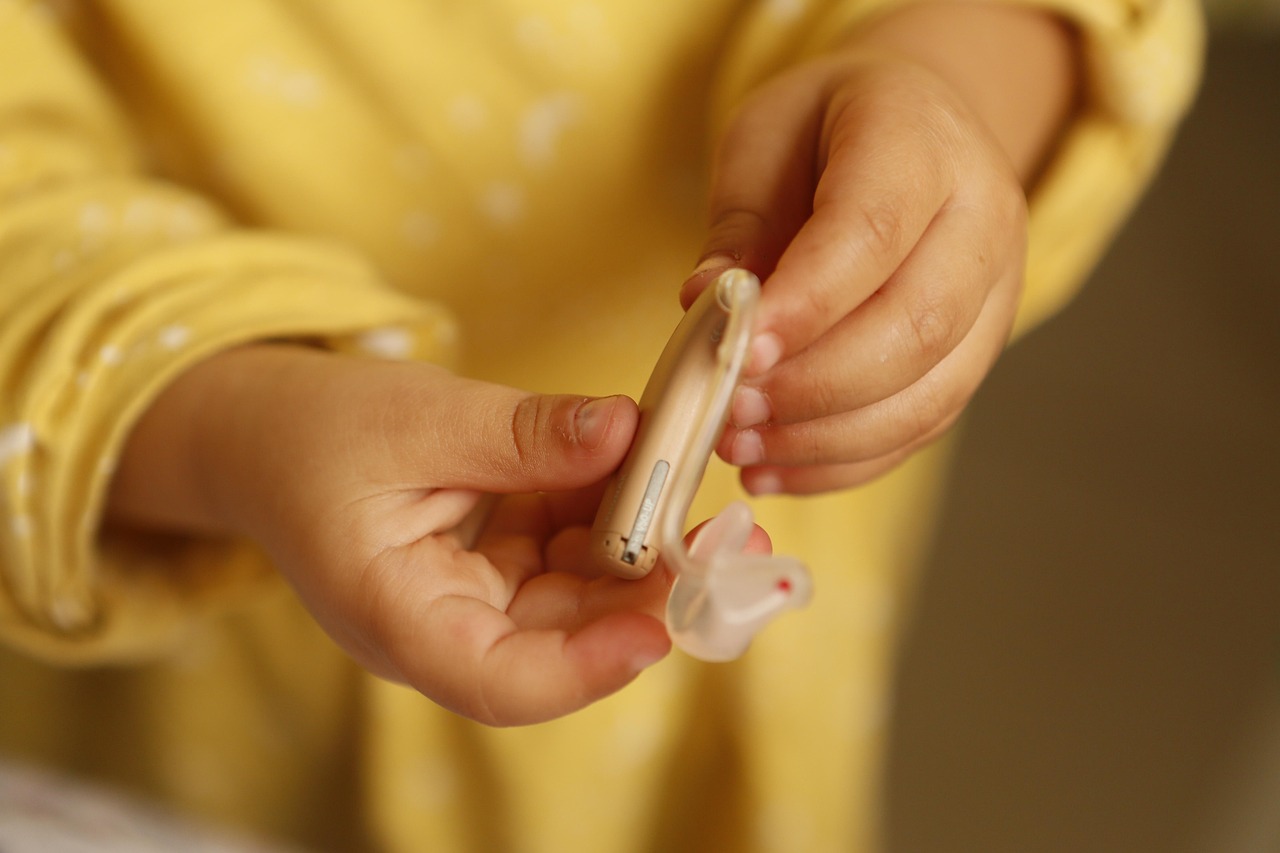
Our Top 10 Best Hearing Aids for 2025
Thanks to rapid advancements, hearing aids in 2025 are more sophisticated, capable, and discreet than ever before. With approximately 37.5 million adults in the United States experiencing some degree of hearing loss, these devices play a crucial role in improving overall well-being, confidence, and participation in everyday life.
Choosing the right hearing aid involves considering factors like average price, range of models, available features, and comfort. Our comprehensive review evaluates top brands based on these criteria to help you find the best solution for your needs.
Our Top 10 Best Hearing Aids for 2025
Here’s a detailed look at the leading hearing aid brands:
1. Jabra Enhance – Best Hearing Aids Overall Jabra Enhance provides personalized hearing aid solutions based on online hearing test results. They offer one core model available in rechargeable and battery-powered versions, customized before delivery. A significant advantage is their extensive ongoing customer care, including a 3-year warranty and 3 years of free technical support. With a user-friendly mobile app and a selection of powerful accessories, Jabra Enhance stands out for its comprehensive support and tailored experience.

2. hear.com – Best for Streamlined, Personalized Hearing Aid Solutions hear.com is a leading licensed hearing aid distributor and manufacturer, boasting a vast network of top hearing specialists and audiologists across the U.S. They facilitate convenient, first-class care by connecting users with local specialists who help identify the best hearing aids for individual needs. Virtual care is also available in some states. hear.com offers a wide range of devices for all levels of hearing loss, including their popular rechargeable hear.com Horizon Go. The entire process is guided by knowledgeable care specialists, and flexible financing options are available.
3. Audien – Best for Those on a Budget Audien Hearing offers two main models, the Atom and Atom Pro, known for their affordability, rechargeability, and simplicity. These devices are designed for a straightforward user experience, requiring no medical prescriptions or audiologist visits. Audien provides a low-cost, accessible option for basic hearing amplification, appealing to those seeking simple solutions or first-time hearing aid users due to their one-size-fits-all approach and lack of need for custom fitting.
4. Eargo – Best for Mild to Moderate High-Frequency Hearing Loss Eargo provides direct-to-consumer hearing aid technology across four model levels. Their virtually invisible in-the-canal design and comfortable silicone tips are key features. All Eargo models are rechargeable with portable charging cases, though batteries are not replaceable after approximately 1000 charges. Eargo offers sample products, a 45-day trial period, and a one-to-two-year warranty with various customer support options. Three of their models come with a mobile app for personalization, alerts, and updates.
5. Oricle (Information on Oricle is limited in the provided text. It is listed as a brand with “No doctor needed, wirelessly rechargeable hearing aids.”)
6. MDHearing – Best for Mild to Moderate Hearing Loss in Adults MDHearingAid specializes in affordable, simple behind-the-ear hearing aids for adults with mild to moderate hearing loss. Their devices are easy to use and come with four factory-set sound profiles. Three models are available, ranging from the basic Air to the smartphone-enabled Core. MDHearing provides a free online hearing screening and in-house audiologist reviews to determine suitability. They offer a 45-day return period and a 90-day warranty.
7. Audicus – Best for Ongoing Support, Maintenance, and Cleaning Services Audicus offers four different rechargeable and battery-powered hearing aids, including behind-the-ear and invisible options in various colors. They provide a 100-day money-back trial period, a 2-year warranty, and lifetime support. Audicus requires an online hearing test or a third-party audiogram for personalized recommendations and custom programming. While some models are pricier, Audicus stands out for its multiple long-term repair, cleaning, and support services, as well as financing and membership options.
8. Lexie – Best for Access to Hearing Experts Lexie hearing aids are highly customizable devices that include support from hearing experts. Users can perform a hearing test and make adjustments via the Lexie app or opt for remote adjustments through video calls with specialists. Lexie offers a 45-day risk-free trial and does not require a prescription for purchase. They also provide a monthly payment plan and a protection plan for damage and loss.
9. Oticon – Best for Cutting-Edge Hearing Aid Technology Oticon is a premium hearing aid manufacturer, offering numerous models for various types of hearing impairment. Their advanced models utilize deep learning to minimize noise and enhance conversation clarity. Most Oticon hearing aids are smartphone-controlled and the company offers solutions for children and one-sided hearing loss. To purchase, users need to visit a local audiologist within Oticon’s extensive dealer network, ensuring readily available local support.
10. Yes Hearing – Best for In-Home Hearing Care Yes Hearing provides a convenient, affordable, in-home solution for individuals with hearing loss. They sell high-quality hearing aids from trusted brands and offer service plans tailored to treatment needs. While not available everywhere, Yes Hearing has a large network of professional ear specialists who conduct product demonstrations, fittings, and provide guidance on use, with additional home visits available for a fee.
Our Methodology: How We Reviewed the Best Hearing Aids
To compare the top hearing aid brands, we prioritized reputable and established providers known for their technology, customer service, and range of products. Our evaluation focused on key aspects that directly impact user experience and effectiveness:
- Average Price: Assessing the overall cost-effectiveness and value offered by each brand’s models.
- Range of Models: Evaluating the diversity of hearing aid styles (BTE, RIC, CIC/IIC, ITE/ITC) and technology levels available.
- Features on Offer: Examining advanced functionalities like directional microphones, noise reduction, rechargeable batteries, smartphone connectivity, AI integration, and tele-healthcare options.
- Comfort and Fit: Considering design aspects that contribute to comfortable, long-term wear, including discreetness and customizability.
- Customer Support and Care: Reviewing the availability and quality of technical support, warranties, trial periods, and ongoing maintenance services.
- Accessibility: Assessing factors like the need for prescriptions, availability of online hearing tests, and direct-to-consumer options versus audiologist-led care.
How Does a Hearing Aid Work?
Hearing aids are small electronic devices worn in or behind the ear to amplify specific sounds for individuals with hearing loss, thereby improving their ability to hear and communicate. While designs vary, the basic principle remains consistent:
- Microphone: Picks up sound waves from the environment.
- Amplifier (Processor): Converts sound waves into electrical signals, then processes, boosts, and modifies these signals. Modern digital hearing aids can be highly customized to an individual’s specific hearing loss pattern and automatically adjust volume and programming for different environments using advanced algorithms and AI.
- Speaker (Receiver): Produces the amplified and processed sound into the ear canal.
This system allows users to hear more clearly in various environments, from quiet settings to noisy gatherings.
What are the Different Types of Hearing Aids Available?

Hearing aids come in various styles, each suited for different degrees of hearing loss and lifestyle preferences:
- Behind-the-Ear (BTE): The main part hooks over and sits behind the ear, connected by a thin tube to an earmold (custom or pre-made tip) inside the outer ear. BTE aids are versatile, fit all degrees of hearing loss, and generally house more features and power.
- Receiver-in-Canal (RIC) / Receiver-in-the-Ear (RITE): Similar to BTE, but the speaker or receiver sits in the ear canal, connected by a tiny wire to the behind-the-ear portion. This style is often less visible and frequently available with rechargeable batteries and wireless connectivity.
- Completely-in-the-Canal (CIC) / Invisible-in-the-Canal (IIC): These aids sit deep inside the ear canal, making them nearly or entirely invisible. They are custom-made for a snug fit. Due to their small size, they may be harder to handle and have less space for features like volume control or extra microphones, typically suiting mild to moderate hearing loss.
- In-the-Canal (ITC) / In-the-Ear (ITE): ITC aids sit just inside the ear canal, while ITE aids fill the outer ear bowl. Being larger than CIC/IIC, they can accommodate more features, larger batteries, and directional microphones for better hearing in noise. They are also easier to handle for those with dexterity issues.
What You Must Consider Before Buying a Hearing Aid
- Audiologist vs. Direct-to-Consumer (DTC): While DTC brands are often more affordable and convenient, purchasing from a licensed audiologist provides comprehensive care, including a thorough diagnosis, personalized fitting, custom programming, and ongoing adjustments and support. Audiologists can also identify underlying medical conditions related to hearing loss.
- Hearing Test: A comprehensive hearing test and evaluation by an audiologist is crucial before purchasing hearing aids. This test accurately determines the type and degree of hearing loss, guiding the selection of the most appropriate device. Many online retailers offer free hearing screenings, but a professional diagnostic test is highly recommended.
- Pricing: Hearing aids generally range from a few hundred dollars to over $2,000 (and much higher for premium models, especially in India, where prices can exceed ₹3,00,000 per ear). Health insurance typically does not cover hearing aids, though Medicare Advantage plans may offer partial benefits, and VA benefits might provide coverage for veterans. Many retailers offer payment plans.
- Trial Period: Look for devices with a risk-free trial period of at least 30 days to ensure satisfaction. Understand the refund policy if you return the hearing aid during this period.
- Warranties/Repairs and Adjustments: Ensure your hearing aid includes a warranty covering parts and labor for a specified period (often 1-3 years). Some warranties may also include office visits for cleanings and adjustments. Extended warranties might be available for continued coverage.
- Additional Accessories: Modern hearing aids can come with various accessories like remote controls, custom ear tips, and cleaning tools, enhancing comfort and usability.
- Extra Features:
- Directional Microphones: Essential for noisy environments, these microphones focus on sounds from a specific direction, enhancing speech clarity. Adaptive versions automatically adjust focus.
- Noise Reduction/Cancellation: All modern hearing aids offer some level of noise reduction, with more expensive models providing advanced algorithms to filter out background noise, including wind.
- Rechargeable Batteries: Conveniently eliminate the need for frequent battery changes. Most rechargeable batteries last 3-5 years before needing replacement (which typically means replacing the hearing aid itself).
- Smartphone Capabilities: Many modern hearing aids connect wirelessly to smartphones via Bluetooth, allowing for direct audio streaming (calls, music) and discreet adjustment of settings through dedicated mobile apps. New Bluetooth technologies like Auracast are also enhancing multi-device connectivity and audio sharing.
- AI (Artificial Intelligence): Increasingly integrated into hearing aids, AI allows for real-time environmental analysis, automatic sound adjustments, personalized soundscapes, and even health monitoring (e.g., fall detection, activity tracking) in some advanced models.
Takeaway
Hearing aids represent a significant investment, and while direct insurance or Medicare coverage is uncommon, many companies offer financing options to make them more accessible. For those on a tighter budget, basic models provide effective amplification without the “fancier” features of premium devices. Understanding the features, pricing, and fit options available in 2025 will empower you to choose the best hearing aid for your unique needs and lifestyle.




